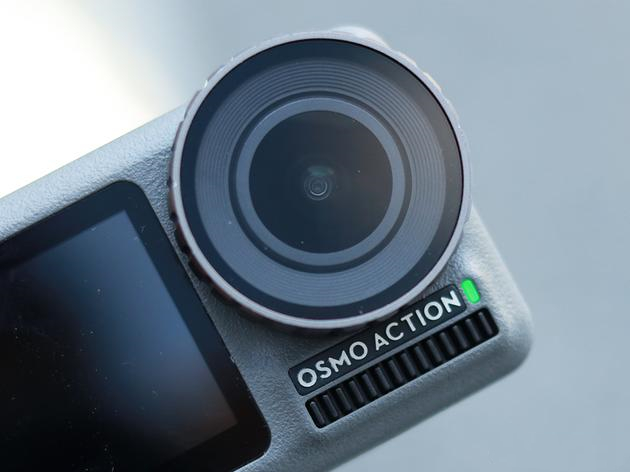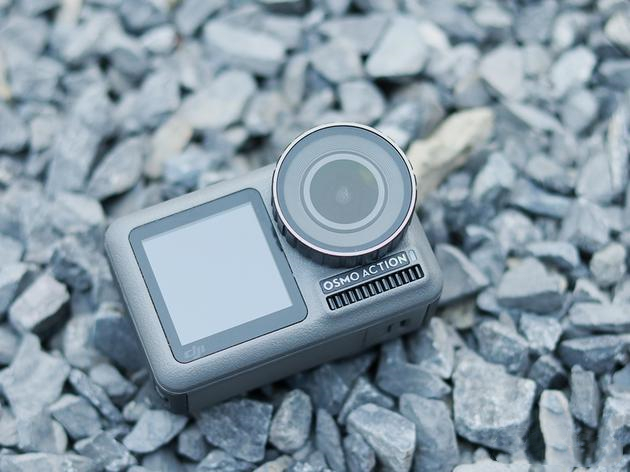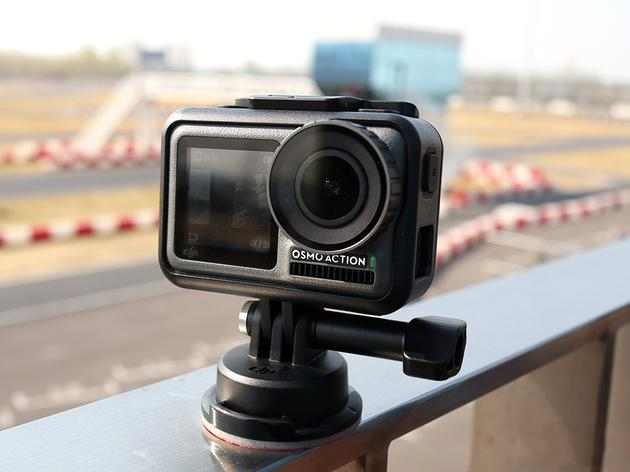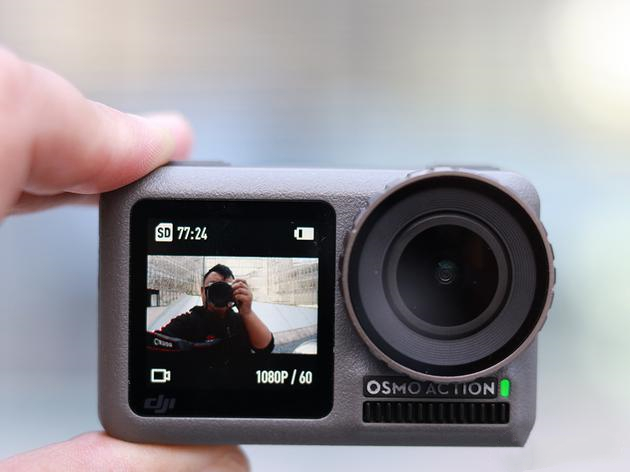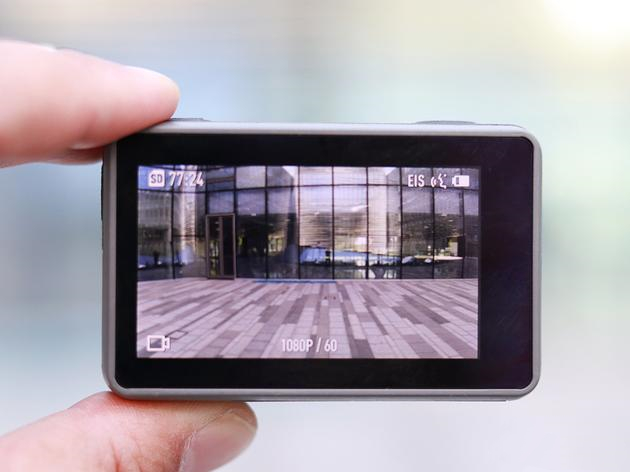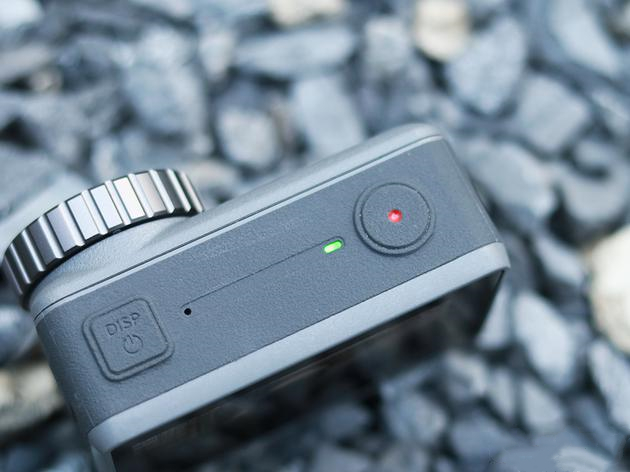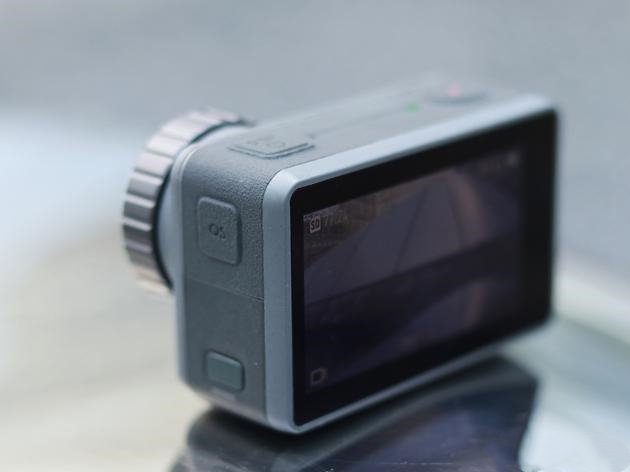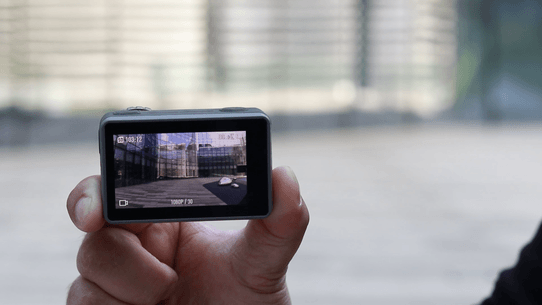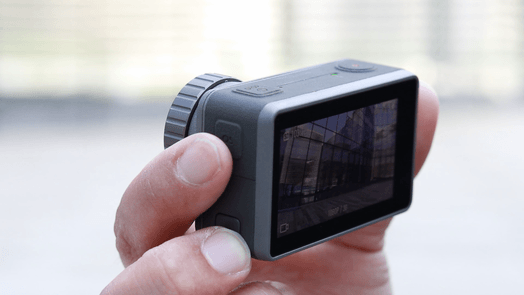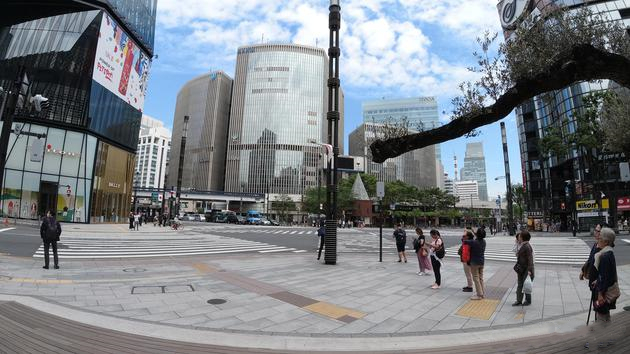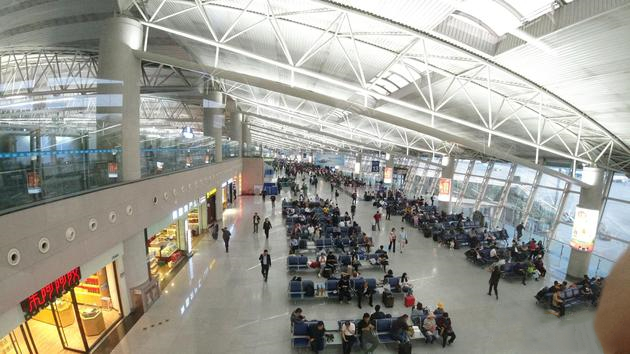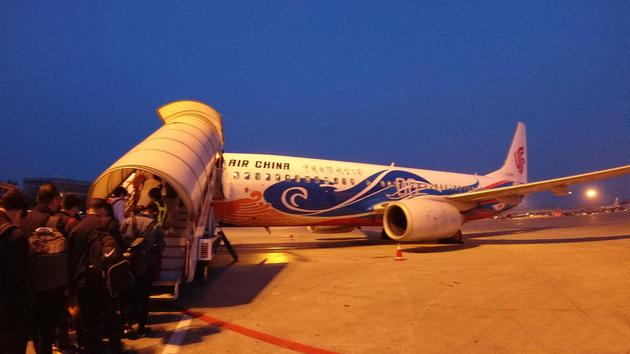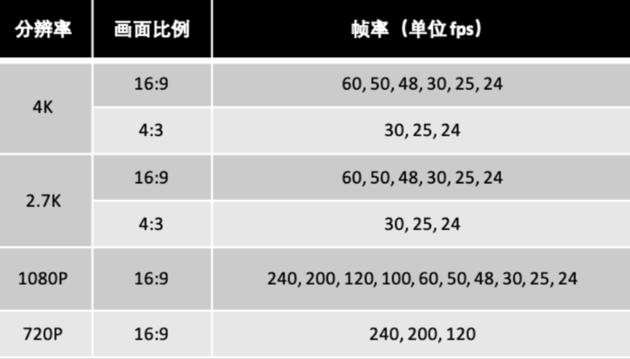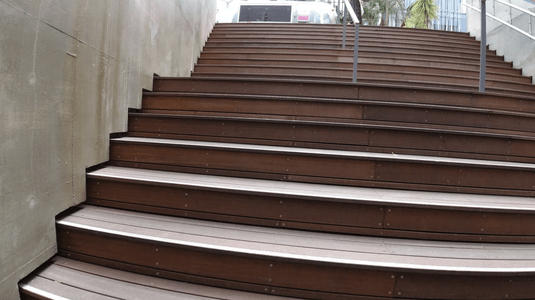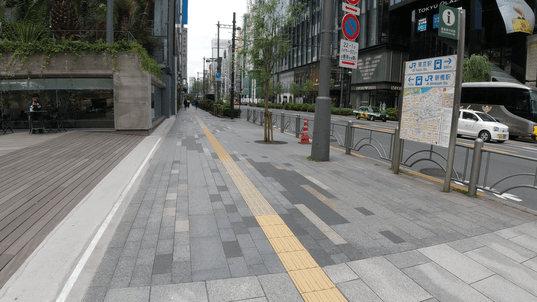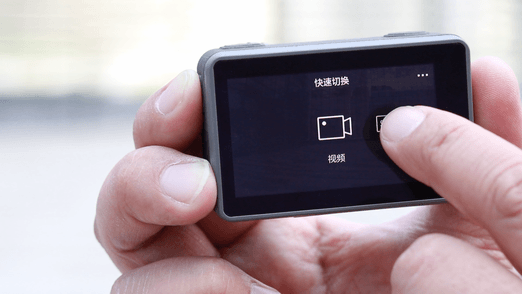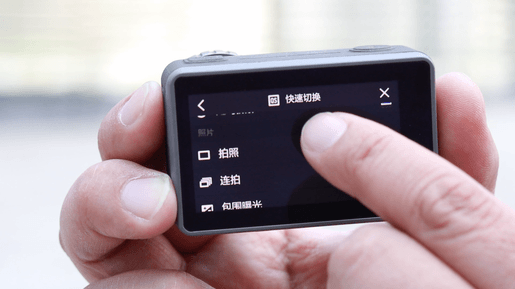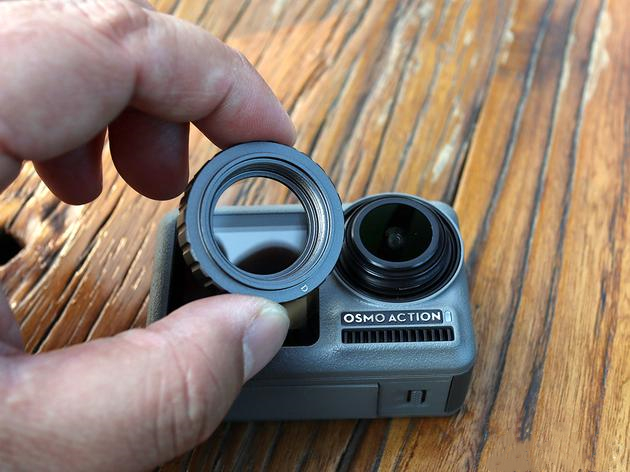In recent years, more and more people focus on exercise and health, and most of the young people would like to record their outdoor activities by motion cameras.
Although there are more and more motion camera at the market, GoPro is at a dominant position which is like drones for DJI.
Last year, DJI launched OSMO Pocket 3-Axis Stabilized Handheld camera, which even made us think it was a competitor for GoPro Hero7. The advantages of DJI OSMO Pocket camera is the small size of the 3-axis stabilizers, while the advantages of GoPro Hero7 is the accumulation of motion cameras. But now, DJI OSMO ACTION motion camera has been launched, and it will be the strong rival for GoPro.
Design:
The size of OSMO Action is small, which looks like a automobile data recorder. The motion camera design is very delicate which should catch people’s eyes, and it can be operated by one hand.
Although the size of OSMO Action camera is small, the internal part is made of magnesium alloy frame, and the external part is made of PC plastic and soft rubber package which is processed specially, which makes sure the camera has sturdy design and good holding.
The most attractive point is the dual screen design, which has a 2.25-inch rear touching home screen having the resolution of 640 x 360 pixels. The monitor surface is covered with AF coating for oil drainage and antifouling, and some common operations are mainly completed through this home screen.
There is a 1.4-inch screen having the pixel density of 300ppi, which is used for showing the real-time shooting picture, recordable time of SD card, battery level and other information.
The brightness of the two screens is up to 750cd/m2, which can be seen clearly. Also, the OSMO Action has a built-in heat conduction system, which directs the heat generated by front screen and battery to the lens metal shield and metal heat sink placed on the front of the camera, that is to ensure the heat level of the camera is at a reasonable level.
Although the OSMO Action comes with dual screens, the buttons are fully equipped.
There are a power button and a capture button on the top side, and a switch button is on the left side which is to switch the front screen to rear screen and common modes operation.
It may be because the thick rubber on the surface, it is significantly heavier when pressed.
Performance:
The most attractive point is the dual screen viewfinder feature. Though the GoPro Hero 7 has a screen on both sides, the front screen is a monochrome LCD screen that can only display some information about the phone’s current operation, which is not a viewfinder. Therefore, GoPro Hero 7 just to be a single motion camera, which is not quite suitable to take vlogs.
GoPro Hero 7 is a small size motion camera, and you often use it with a selfie stick. After taking a selfie video for about 10 minutes, you realize the video didn’t get you, which will be annoyed. However, through the front screen of OSMO Action, you can know where your position is.
In addition, due to the small size of the OSMO Action, the front screen can act as an auxiliary viewfinder with a variety of accessories. The lens also supports the replacement of the filter.
It’s easy to switch between the front and rear screens, double-clicking the home screen with two fingers or pressing the buttons on the side.
Overall, the dual screen of OSMO Action is suitable for Vlogger. In addition, the port of OSMO Action is compatible for most of accessories of motion camera at the market.
OSMO Action runs DJI’s Action OS for scenes used in motion cameras. The operation is simple, which can operate it by sliding the screen. In addition to the regular screen touching operation, OSMO Action can also use the physical buttons with dual screens to switch the camera modes. When the camera is completely closed, users can also click the shooting button in accordance with the preset shooting mode to snap shot.
What’s more, OSMO Action can be controlled by voice. Simply speak a specific command for the motion camera, and the camera will automatically complete the command. OSMO Action currently supports five voice commands like filming, capturing photos, and powering down the device effortless.
Camera capability is an important indicator of a motion camera. Let’s check out how the OSMO Action camera performs.
OSMO Action comes with a 12MP wide-angle lens with f/2.8 and FOV of 145 degrees, and has a built-in 1/2.3 inch CMOS sensor. It is easy to shoot a video that simulates first person vision wearing on the head or chest.
According to the sample, OSMO Action films have good saturation and contrast in daytime, which can restore the color.
The image quality is also good at night and in low light, but there is serious noise.
In the video part, the OSMO Action supports up to 4K 60fps of 10Mbps video.
Anti-shake performance has always been a key factor for motion cameras, so we test the anti-shake performance in the video part.
GoPro 7 adopts HyperSmooth anti-shake technology, which is to achieve electronic anti-shake by movement compensation. While the OSMO Action adopts RockSteady stabilization technology, which comes with the latest stabilization algorithm researched by DJI. The shaking in all directions can be automatically identified and effectively eliminated. This technology can make sure that the camera’s normal steering motion can be preserved at the maximum while eliminating shaking.
In order to test the stability of the OSMO Action, I held the OSMO Action to shoot videos while ran and took the stairs. The video quality is well and smooth.
As a special note, I test the OSMO Action camera in handheld mode. This is the advantage of RockSteady stabilization technology, which can greatly reduce the picture dithering caused by camera shaking without the need of accessories.
Many motion scenes are shot by a motion camera placing on a stabilizer. However, in addition to losing the advantages of compact and light of motion camera, it also lose the ability to shoot certain scenes because the stabilizers themselves cannot be as waterproof and dustproof as motion cameras.
OSMO Action has other features in video mode, which supports 8x slow motion, timelapse and timed shooting mode.
In the default single shot mode, user can adjust the photo’s exposure, sensitivity, shutter speed and other common operations. It also supports 120s custom exposure settings and store RAW files.
What’s more, OSMO Action can connect to phone’s Mimo app by WiFi, and upload some of the videos to edit.
Battery:
OSMO Action is fueled by 1300mAh battery which is charged by Type-C port and charging time is about 88 minutes. A fully charged battery can support video recording at regular video mode for up to 40 minutes.
Conclusion:
OSMO Action as the first motion camera of DJI has good performance. Of course, it also has some disadvantages, such like the 12MP camera, which has serious noises in night shot.
Compared with GoPro’s emphasis on extreme sports, OSMO Action focuses more on life and is more suitable for novice users.
In price, the GoPro Hero 7 is priced at $399.99, and the OSMO Action is priced at $349. There is no essential difference in shooting quality, but the OSMO Action has dual viewfinders.
Overall, the powerful rival of GoPro Hero 7 shows up.

